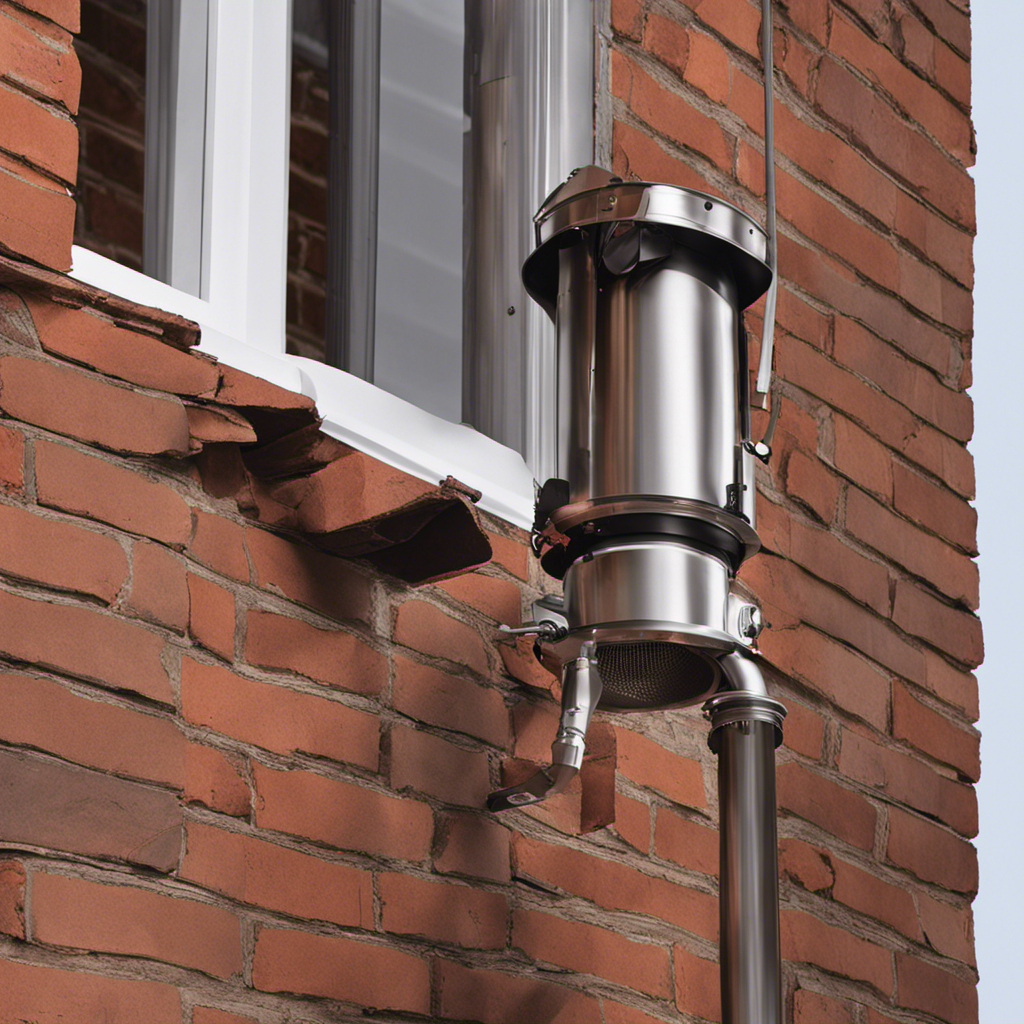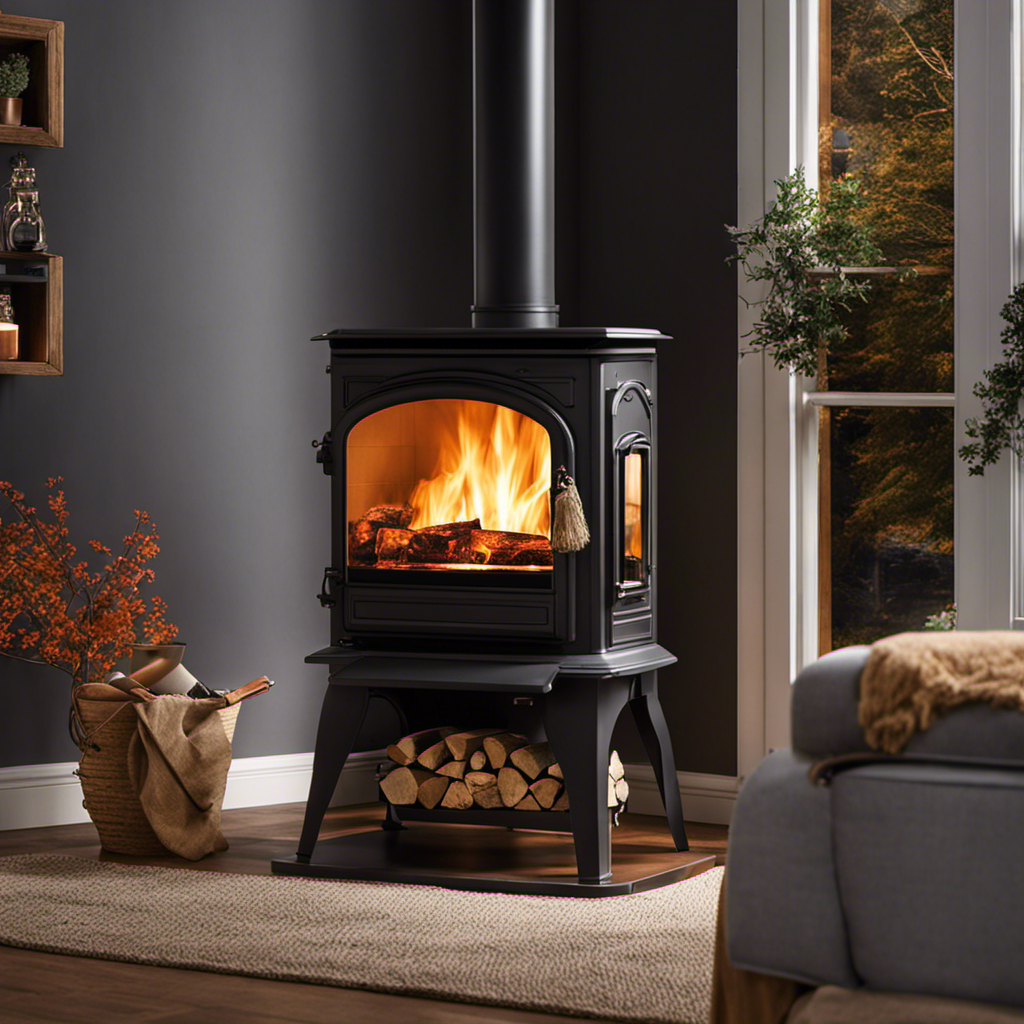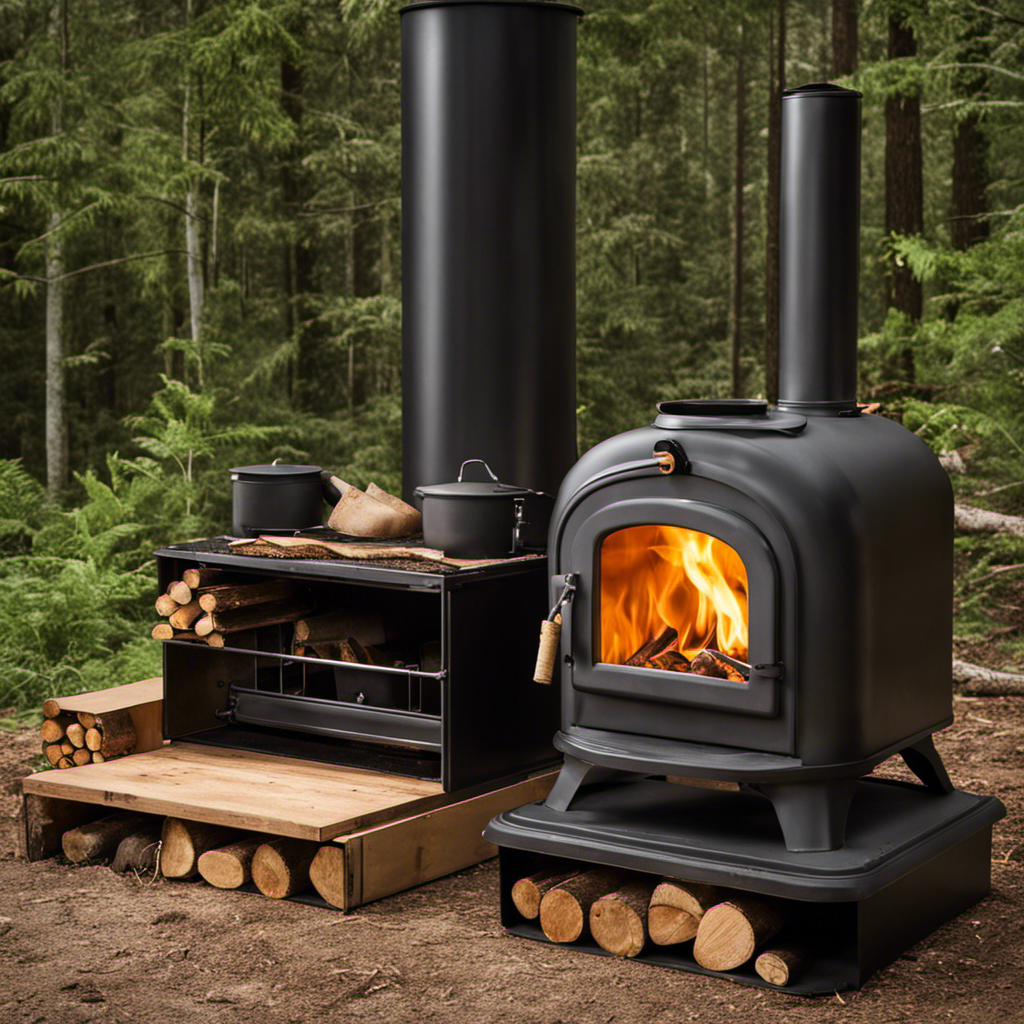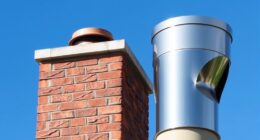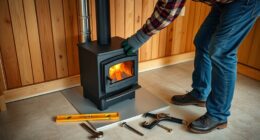Armed with experience from DIY projects, I’m on hand to walk you through how to install a chimney liner for your wood stove.
Are you ready to take your wood stove to the next level? With a few safety precautions, the right tools and materials, and step-by-step instructions, you’ll be able to enjoy the warmth and coziness of your wood stove without any worries.
So, let’s roll up our sleeves and get started on this exciting home improvement project.
Key Takeaways
- Safety precautions such as wearing gloves, safety glasses, and a dust mask are essential during the installation process.
- Proper ventilation, including opening windows and using a fan, is necessary to prevent the buildup of dangerous gases.
- The tools and materials needed for chimney liner installation include a drill, screws, a chimney liner kit, insulation, and connectors.
- Preparing the chimney by inspecting and cleaning it, as well as checking for any cracks or damage, is crucial before installing the chimney liner.
Safety Precautions
I’m following all the safety precautions while installing the wood stove chimney liner. Safety equipment is crucial to protect myself from any potential hazards. I make sure to wear gloves, safety glasses, and a dust mask to shield my hands, eyes, and lungs from any debris or harmful particles.
Additionally, I ensure proper ventilation in the area where I’m working. This is important to prevent the buildup of dangerous gases, such as carbon monoxide. I open windows and doors to allow fresh air to circulate, and I also use a fan to further improve air movement.
Tools and Materials Needed
To complete the installation, I’ll need a drill and screws, as well as a chimney liner kit that includes a liner, insulation, and connectors. Here are the three items you’ll need for a successful installation:
-
Chimney Liner: This is a stainless steel pipe that will be inserted into your existing chimney. It’s important to choose the right size liner for your wood stove to ensure proper airflow and safety.
-
Insulation: Insulating the chimney liner is crucial for maintaining optimal temperature and preventing condensation. There are various insulation options available, such as ceramic wool or rockwool, which provide excellent heat resistance and insulation.
-
Connectors: These are the components that connect the chimney liner to the wood stove or other heating appliances. Make sure to choose connectors that are compatible with your specific wood stove model for a secure and efficient connection.
When installing a wood stove chimney liner, measuring accuracy and selecting the right insulation options are vital for a safe and efficient operation.
Preparing the Chimney for Liner Installation
Firstly, I carefully inspected the chimney to ensure its readiness and then cautiously began the process of preparing it for the liner installation. Before installing a wood stove chimney liner, it’s crucial to clean and maintain the chimney to ensure proper functioning and safety.
Chimney cleaning involves removing any built-up soot, debris, or creosote that may have accumulated over time. This can be done using a chimney brush or hiring a professional chimney sweep.
Once the chimney is clean, it’s essential to inspect for any cracks, leaks, or damage that may require repair before installing the liner. This step is crucial to prevent any potential hazards and ensure optimal performance of the wood stove chimney.
Regular chimney maintenance and cleaning are essential to prolong the lifespan of the chimney and maintain a safe and efficient wood-burning experience.
Installing the Chimney Liner
Once the chimney is adequately prepared, I begin the process of installing the chimney liner, ensuring a secure and efficient wood stove operation. Choosing the right liner is crucial for a successful installation. There are three main factors to consider:
-
Material: Stainless steel liners are the most popular choice due to their durability and resistance to corrosion. They’re suitable for most wood stove applications.
-
Size: The liner should be properly sized to match the wood stove’s output. A liner that’s too small can hinder airflow, while one that’s too large may not provide sufficient draft.
-
Insulation: Insulated liners help to improve efficiency by keeping the flue gases warm and reducing condensation. This helps prevent creosote buildup and increases the lifespan of the liner.
Common installation mistakes include using the wrong size liner, failing to secure the liner properly, and neglecting to insulate the liner. It’s important to follow manufacturer guidelines and consult a professional if needed.
Testing and Inspecting the Installed Chimney Liner
After completing the installation of the chimney liner, I now need to test and inspect it for any potential issues or damages. This step is crucial to ensure the safety and efficiency of the wood stove. One important aspect to consider is the insulation requirements of the chimney liner. Proper insulation helps to prevent heat loss and condensation buildup, which can lead to corrosion and damage. Additionally, regular maintenance is vital to keep the chimney liner in optimal condition. Here are some maintenance tips to follow:
| Maintenance Tips |
|---|
| Regularly inspect the chimney liner for any cracks or damages. |
| Clean the chimney liner at least once a year to remove any creosote buildup. |
| Check the insulation around the liner and repair or replace if necessary. |
| Ensure that the chimney cap is in good condition to prevent water or animal entry. |
| Schedule professional inspections and cleanings to ensure the chimney liner is functioning properly. |
Frequently Asked Questions
How Do I Choose the Right Size and Type of Wood Stove Chimney Liner for My Specific Wood Stove Model?
I choose the right size and type of wood stove chimney liner for my specific wood stove model by considering the dimensions and specifications of my stove. Different liner types offer benefits such as increased efficiency and improved safety.
Can I Install a Wood Stove Chimney Liner Myself, or Do I Need to Hire a Professional?
I’ve researched Wood Stove Chimney Liner installations extensively. It’s crucial to decide whether to DIY or hire a pro. Consider the complexity, safety risks, and local building codes. Choose wisely for a successful installation.
Are There Any Building Codes or Regulations That I Need to Comply With When Installing a Wood Stove Chimney Liner?
When installing a wood stove chimney liner, it is crucial to comply with building code requirements and installation regulations. Familiarize yourself with local codes to ensure a safe and compliant installation.
How Often Should I Clean and Maintain My Wood Stove Chimney Liner to Ensure Optimal Performance and Safety?
I clean and maintain my wood stove chimney liner at least once a year to ensure optimal performance and safety. It’s important to choose the right size and type of liner for your specific wood stove model.
Can I Use My Existing Chimney and Just Install a Liner, or Do I Need to Completely Replace the Chimney When Installing a Wood Stove Chimney Liner?
I can either use my existing chimney and just install a liner, or replace the entire chimney when installing a wood stove chimney liner. There are benefits to replacing the chimney, such as improved safety and better performance.
Conclusion
In conclusion, installing a wood stove chimney liner is a crucial step in ensuring the safety and efficiency of your wood stove.
By following the proper safety precautions, gathering the necessary tools and materials, and carefully installing the chimney liner, you can enjoy the benefits of a well-functioning wood stove.
Remember, a well-installed chimney liner is like a breath of fresh air for your wood stove, allowing it to operate smoothly and effectively.
Logan’s affair with adventure began in childhood. He hailed from a small town where vast forests bordered one side and endless shores stretched on the other. His days were spent exploring uncharted woods, climbing tall trees, or listening to the tales of old sailors. This early immersion in a world brimming with stories and mysteries became the foundation of his passion for writing.

